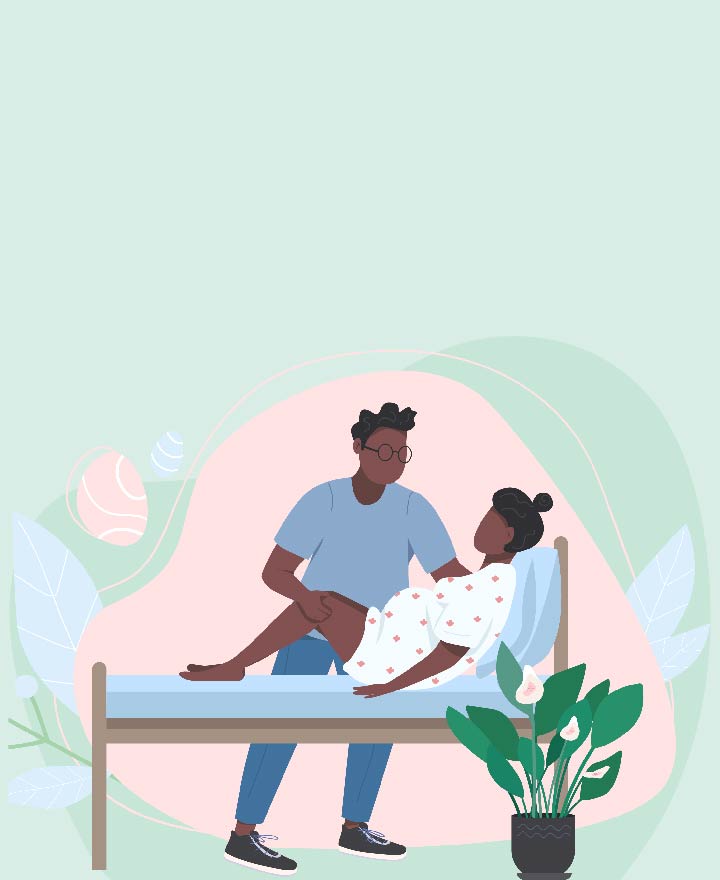

A Comprehensive Overview of 7 Alternative Birth Practices
Apart from standard labor and delivery method, there are alternative childbirth practices and methods followed around the globe. While some of the practices may offer possible benefits to you or your baby, some of them can also raise the risk of certain infections for your newborn. Here's a rundown of seven different alternative practices, and what you should know.
Alternative Birth Options
Below listed are some of the alternative birth methods:
1.Water birth
A water birth involves going through labor or delivery while soaking in a tub of warm water. Most childbirth centres now have birthing tubs available, though typically only for use during labor.
Scientifically, water births appear to improve comfort in the early, first stage of labor, but not beyond that. There is no known benefit of water birth to the newborn. In contrast, there may be bacteria in water that could infect a baby born in the tub.
2. Vaginal seeding
This is when a baby born by cesarean section has their nose, mouths, and skin swabbed with vaginal fluid from the birth parent. The goal is to give the baby exposure to vaginal flora (bacteria) they would have had going through the birth canal. While there may be bacteria in vaginal fluids that may be good for a baby's microbiome, it can also contain harmful microbes. For example, babies should not have vaginal seeding if the cesarean section was intended to avoid an infection from the birth parent (such as HIV, group B Streptococcus, or genital herpes).
Babies born by cesarean section do appear to have increased risk of allergies, asthma and obesity later in life.
3. Lotus birth
It's when the umbilical cord (and the placenta) is left attached to the baby, rather than being cut and removed right after birth. With a lotus birth, they are allowed to dry until the cord detaches on its own, usually within 3 to 10 days.
Though a lotus birth may seem "non-violent" way to transition the baby from womb into the real world, there is no evidence that it has any effect on baby's emotional development. However, if the attached cord or placenta becomes rotten, it can allow the bacteria to grow rapidly, and possibly travel from the tissue to your baby. There are known instances of babies with lotus births becoming very sick.
4. Eating the placenta (Placentophagy)
Placentophagy is the practice of eating your own placenta and while this is considered a way to reduce post-partum depression, boost breast milk production or replenish nutrients, there is no scientific proof of these benefits. In fact, there is a risk of food poisoning from consuming placenta if it has started to spoil.
5. Skipping Hepatitis B Vaccine Birthdose
While delaying Hepatitis B dose may seem reasonable if the birth parent is negative, anyone with Hepatitis B may infect the baby if close enough. The hepatitis B vaccine should be given as soon as possible to protect the baby against anyone (not just the birth parent) who may be infected. Babies infected with hepatitis B virus may not show symptoms right away, but the virus can eventually damage the liver.
6. Avoiding Erythromycin Eye Ointment for the Newborn
Erythromycin eye ointment prevents specific bacteria from causing a serious infection that can lead to blindness. If the birth parent has tested negative for this bacteria during the pregnancy, it is extremely unlikely that the baby needs this ointment.
7. Delayed Bathing
The sooner and longer a newborn can have skin-to-skin contact with the birth parent, the better. WHO now recommends delaying a newborn's first bath until 24 hours after birth in most cases as this can help keep the baby's body temperature and blood sugar in control, and promote breastfeeding and bonding.
However, if the birth parent has a genital rash from HSV during delivery, or has HIV, hepatitis B, or hepatitis C, it is important to bath the baby as soon as possible to remove infected fluid from their skin. There are no other known risks of infection if the bath is delayed.
Conclusion
All soon-to-be parents should take a childbirth education class to learn about their options and alternative birthing practices. Consult your OB/GYN to know the preferred method for you and your baby.
One of the important components of our overall wellness is also being financially secured. Healthcare emergencies can happen any time, but a good health insurance can protect you from such uncertain situations. To know more about it, click here
Source: Healthy Children, Medline Plus, Medicine Net
Disclaimer: This blog provides general information and discussions about health and related subjects. The information and other content provided in this blog, website or in any linked materials are not intended and should not be considered, or used as a substitute for, medical advice, diagnosis or treatment. Kindly contact your Doctor before starting a new medicine or health regime.
Related Articles
Diet Guide For New Mothers After Childbirth
A Handy Guide To Pregnancy Planning
Blood Tests During Pregnancy – All You Need To Know
Health Insurance for Your New-Born: Is It a Must?
Importance of Having Health Insurance with Maternity Cover
Published on March 14, 2023

















 Health Insurance
Health Insurance  Travel Insurance
Travel Insurance  Car Insurance
Car Insurance  Cyber Insurance
Cyber Insurance  Critical Illness Insurance
Critical Illness Insurance
 Pet Insurance
Pet Insurance
 Bike/Two Wheeler Insurance
Bike/Two Wheeler Insurance  Home Insurance
Home Insurance  Third Party Vehicle Ins.
Third Party Vehicle Ins.  Tractor Insurance
Tractor Insurance  Goods Carrying Vehicle Ins.
Goods Carrying Vehicle Ins.  Passenger Carrying Vehicle Ins.
Passenger Carrying Vehicle Ins.  Compulsory Personal Accident Insurance
Compulsory Personal Accident Insurance  Travel Insurance
Travel Insurance  Rural
Rural